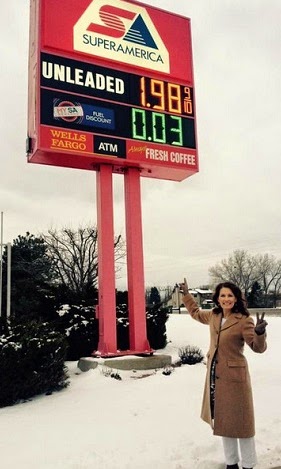By INVESTOR'S BUSINESS DAILY
Election '08: Barack Obama wasn't just the second-largest recipient of Fannie Mae and Freddie Mac political contributions. He was also the senator from ACORN, the activist leader for risky "affirmative action" loans.
Despite efforts to blame the rescue bill's failure on the GOP, it should be remembered that 95 Democrats — some 40% of the Democratic Caucus — withheld support. Obama himself also deserves blame — not only for the bill's failure, but also for the crisis it was designed to solve.
As the New York Times reports, "Aides to Mr. Obama said he had not directly reached out to try to sway any House Democrats who opposed the measure." Is the reason the fact that the slush fund for ACORN in the original bill, siphoning off 20% of any future profits for such activist groups, was trimmed from the tree?
Obama, who once represented ACORN in a lawsuit against the state of Illinois, was hired by the group to train its community organizers and staff in the methods and tactics of the late Saul Alinsky. ACORN would stage in-your-face protests in bank lobbies, drive-through lanes and even at bank managers' homes to get them to issue risky loans in the inner city or face charges of racism.
In the early 1990s, reports Stanley Kurtz, senior fellow at the Ethics and Policy Center, Obama was personally recruited by Chicago's ACORN to run training sessions in "direct action." That's the euphemism for the techniques used under the cover of the federal Community Reinvestment Act to intimidate financial institutions into giving what have been called "Ninja" loans — no income, no job, no assets — to people who couldn't afford them.
CRA was designed to increase minority homeownership. Whenever a bank wanted to grow or expand, ACORN would file complaints that it was not sufficiently sensitive to the needs of minorities in providing home loans. Agitators would then be unleashed.
Chicago's ACORN used Alinsky's tactics against institutions such as Bell Federal Savings and Loan and Avondale Federal Savings. In September 1992, the Chicago Tribune described the group's agenda as "affirmative action lending."
Obama also helped ACORN get funding. When he served on the board of the Woods Fund for Chicago with Weather Underground terrorist William Ayers, the Woods Fund frequently gave ACORN grants to fund its activist agenda.
In 1995, Kurtz reports, Obama chaired the committee that increased funding of ACORN and other community organizers. The committee report boasted that the fund's "non-ideological" image "enabled the Trustees to make grants to organizations that use confrontational tactics against the business and governmental 'establishments' without undue risk of being accused of partisanship."
The CRA empowered regulators to punish banks that failed to "meet the credit needs" of "low-income, minority and distressed neighborhoods." It gave groups such as ACORN a license and a means to intimidate banks, claiming they were "redlining" poor and minority neighborhoods. ACORN employed its tactics in 1991 by taking over the House Banking Committee room for two days to protest efforts to scale back the CRA.
As a former White House staff economist writes in the American Thinker, Obama represented ACORN in a 1994 suit against redlining. ACORN was also a driving force behind a 1995 regulatory revision pushed through by the Clinton administration that greatly expanded the CRA and helped spawn the current financial crisis.
Obama was the attorney representing ACORN in this effort. Last November, he told the group, "I've been fighting alongside ACORN on issues you care about my entire career." Indeed he has. Obama was and is fully aware of what ACORN was doing with the money and expertise he provided. The voters should be aware on Nov. 4 of the roles of both in creating the current crisis.
By INVESTOR'S BUSINESS DAILY
Tuesday, September 30, 2008
ACORN's Senator
Labels:
ACORN,
Andrew-Breitbart,
Community-Organizer,
Community-Reinvestment-Act,
Conservative-Blog,
Stop-Marxism,
stop-sharia-law,
support-seal-team-six,
support-wounded-warrior-projects
Subscribe to:
Posts (Atom)

















